ROOD’S APPROACH
Table of Contents
Rood’s approach techniques
“ IF IT WERE POSSIBLE TO APPLY THE PROPER SENSORY STIMULI TO THE APPROPRIATE SENSORY RECEPTOR AS IT IS UTILIZED IN NORMAL SEQUENTIAL DEVELOPMENT.” said by Margaret Rood.
The Rood Approach for the treatment of central nervous system disorders was developed by Margaret Rood in the 1950s. Rood’s technique can be categorized as one of facilitation and inhibition of movement.
It is one of several of the neurophysiological Approaches which developed at that time and is centered upon four basic concepts to consider during treatment: duality, the ontogenetic sequence, manipulation of the autonomic nervous system and the level of excitability of the anterior horn cell.
STAGES OF MOTOR CONTROL
- Mobility
- Stability
- Controlled Mobility
- Skill
SEQUENCE OF MOTOR DEVELOPMENT
1. RECIPROCAL INHIBITION (INNERVATION)/MOBILITY
– A reflex governed by spinal & supraspinal centers
– Subserves a protective function
– Phasic and reciprocal type of movement
– Contraction of agonist and antagonist
2. CO-CONTRACTION (C0-INNERVATION) /STABILITY
– Simultaneous agonist & antagonist contraction with antagonist supreme
3. HEAVY WORK /CONTROLLED MOBILITY
– Stockmeyer “ mobility superimposed on stability”
– creeping
4. SKILL
– Crawling, walking, reaching, activities requiring the coordinated use of hands
TO NORMALIZE THE MUSCLE TONE
Facilitatory technique:
–To normalize the muscle tone from a flaccid state.
–Icing, fast brushing, tapping, stroking, quick stretch.
rood’s approach inhibitory techniques:
–To normalize the muscle tone from hypertonic or spastic state.
–Deep pressure, slow rolling, and slow rocking.
SEQUENCES IN GROSS MOTOR DEVELOPMENT:
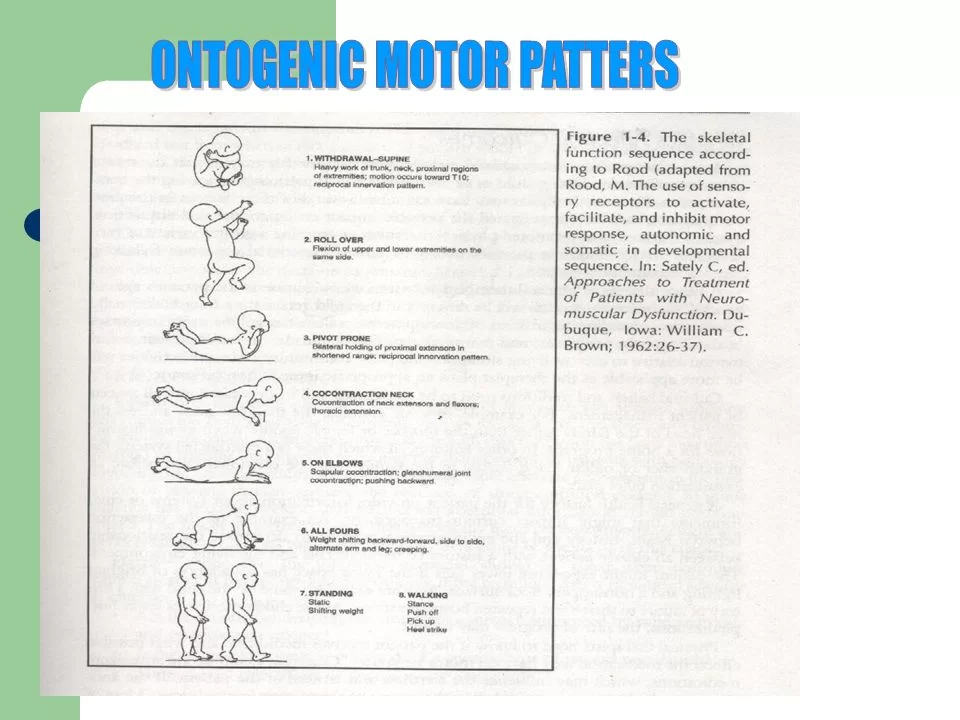
SUPINE WITHDRAWAL
Total flexion response towards vertebral level T10
Requires reciprocal innervation with heavy work of proximal segments
Aids in the integration of TLR
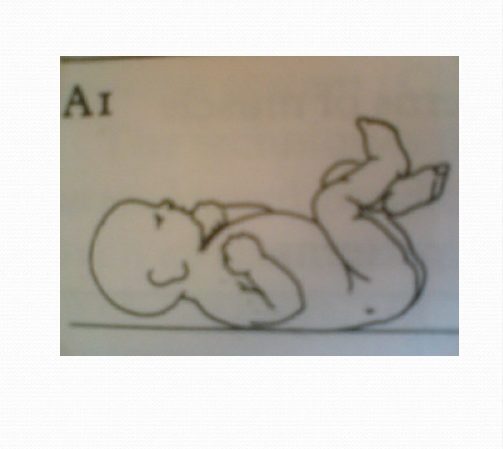
RECOMMENDED:
patients with no reciprocal flexion
Patients dominated by extensor tone
ROLLOVER TOWARD SIDE-LYING
Mobility pattern for extremities and lateral trunk muscles
RECOMMENDED:
Patients dominated by tonic reflex patterns in supine
Stimulates semicircular canals which activate the neck & extraocular muscles
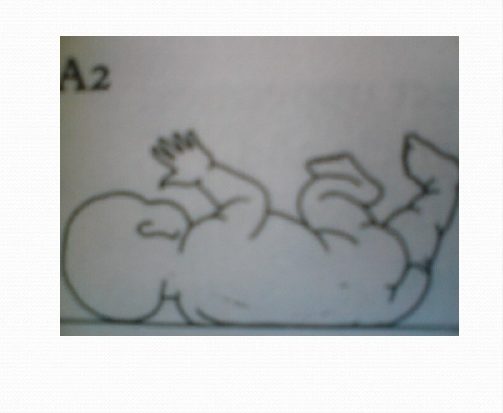
PIVOT PRONE
Demands full range extension neck, shoulders, trunk, and lower extremities
Position difficult to assume and maintain
An important role in preparation for the stability of extensor muscles in an upright position
Associated with the labyrinthine righting reaction of the head
INTEGRATION: STNR & TLRs
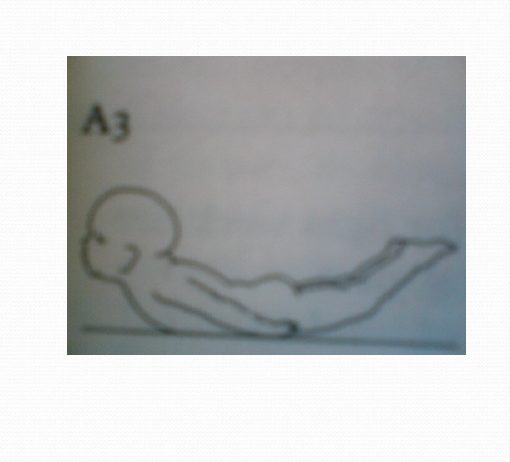
NECK CONTRACTION
First real stability pattern
Activates both flexors & tonic neck extensor muscles
RECOMMENDED:
Patients need neck stability & extraocular control
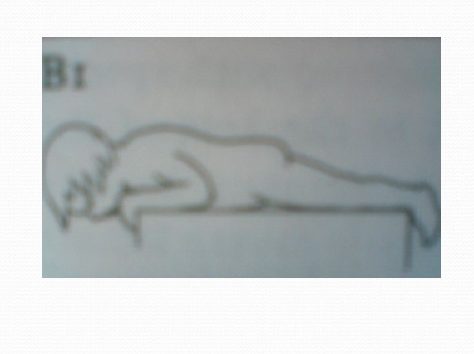
PRONE ON ELBOWS
Stretches the upper trunk musculature
Influences stability of scapular and glenohumeral regions
Gives better visibility of the environment
Allows weight shifting from side to side
RECOMMENDED:
Patients need to inhibit STNR
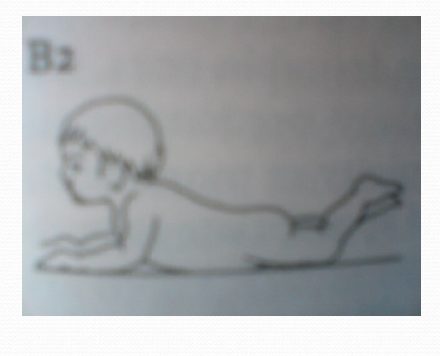
QUADRUPED
All Four limb
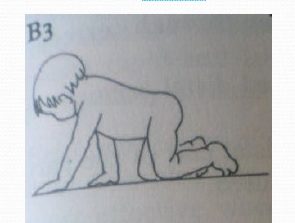
SITTING
Pressure on knees through to heels Auto facilitation.
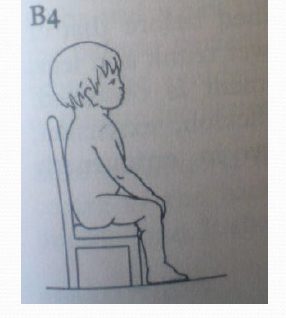
STANDING
A skill of the upper trunk because it frees the upper extremity for manipulation
INTEGRATION: righting
reaction & equilibrium reaction
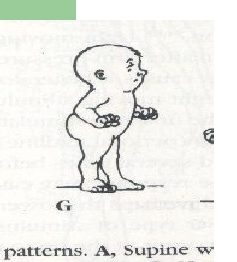
WALKING
A sophisticated process requiring coordinated movement patterns of various parts of the body.
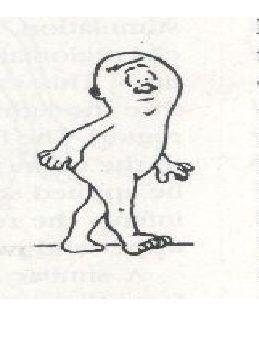
“support the body weight, maintain balance & execute the stepping motion” – Murray
ROOD’S THEORY
1. Normalize muscle tone
2. Treatment begins at the developmental level of functioning
3. Movement is directed towards functional goals
4. Repetition is necessary for the re-education of muscular response
CONTROLLED SENSORY INPUT
FACILITATORY TECHNIQUE:
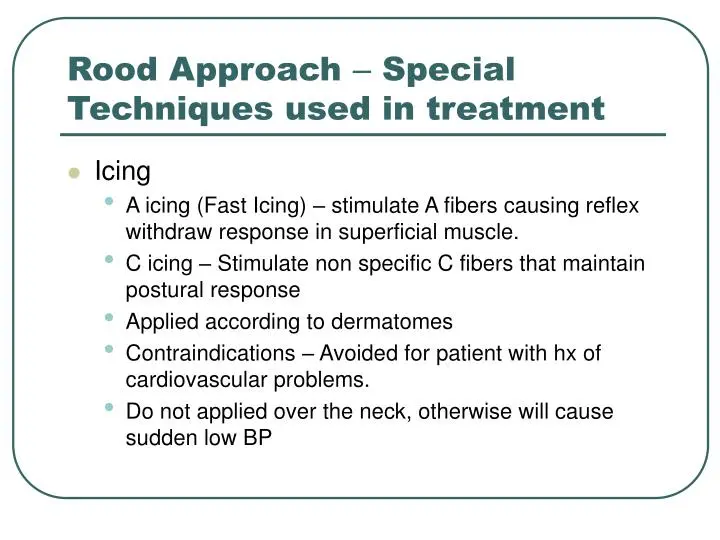
Light moving touch
Fast brushing
Icing.
Rood sensorimotor approach:
Following Proprioceptive Fascilitatory techniques are used :
Heavy joint compression
Stretch
Intrinsic stretch
Secondary ending stretch
Stretch pressure
Resistance
Tapping
Vestibular stimulation
Inversion
Therapeutic vibration
Osteopressure
INHIBITORY TECHNIQUE:
Gentle shaking or rocking
Slow stroking
Slow rolling
Light joint compression
Tendinous pressure
Maintained stretch
Rocking in developmental stages
Rood’s approach video:
FAQ
The main principles of the Rood approach are normalization of tone, gradual developmental sequence, purposeful movement restoration, and repetition or practice.
The Rood Approach used for the treatment of central nervous system disorders developed by Margaret Rood in the 1950s, provides the origin for many of the facilitation and inhibition techniques.
Related Other Article About Physiotherapy Technique:

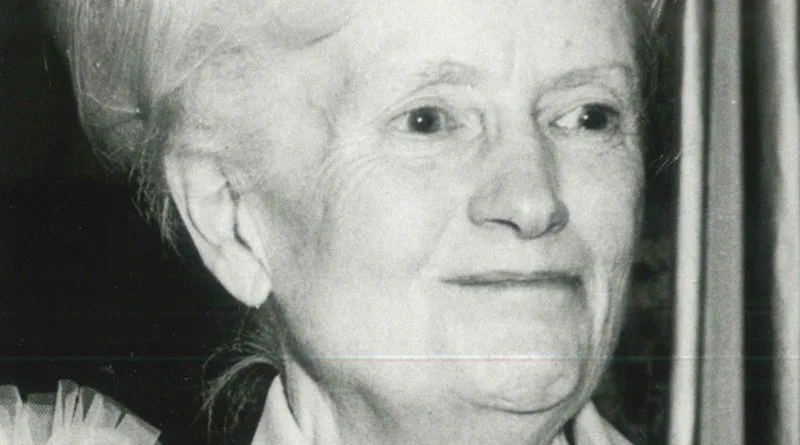

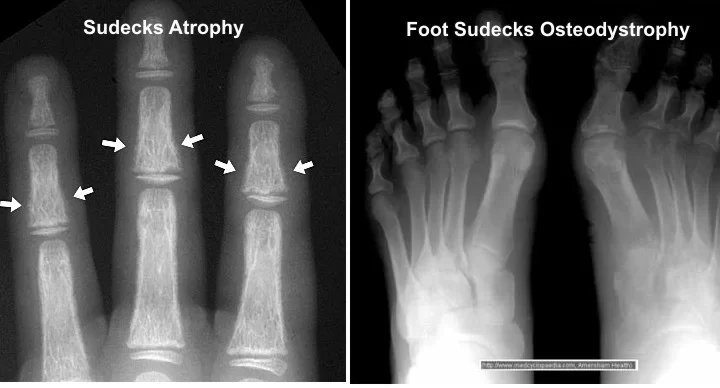

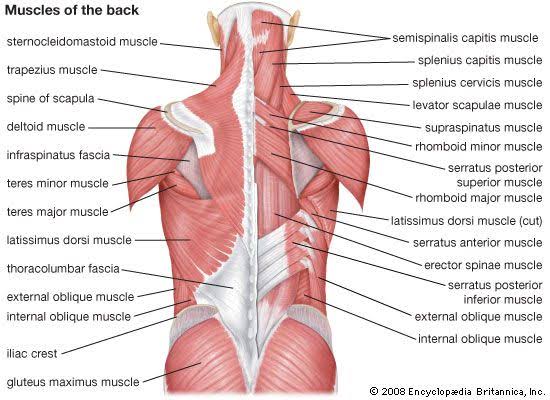
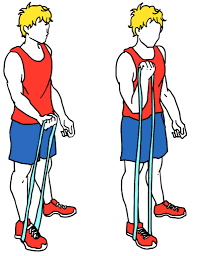
Good article
Helpful
Really very easy to understand and thank you so much ……because of this now I am able to make the presentation.
Easy to Understand best Article, Rood’s Approach is my favorite technique i use for treatment of Hemiplegia